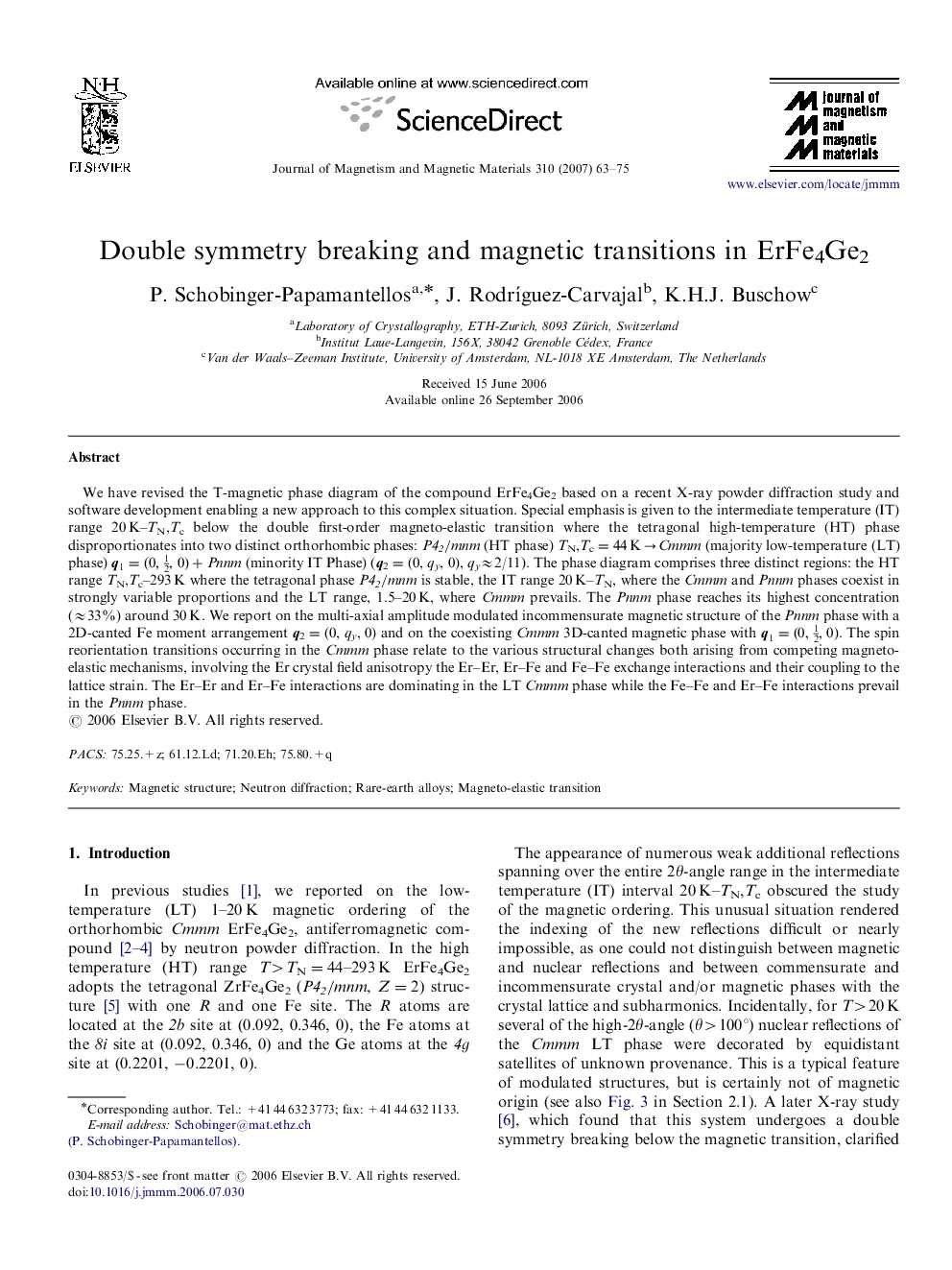| Article ID | Journal | Published Year | Pages | File Type |
|---|---|---|---|---|
| 1804670 | Journal of Magnetism and Magnetic Materials | 2007 | 13 Pages |
We have revised the T-magnetic phase diagram of the compound ErFe4Ge2 based on a recent X-ray powder diffraction study and software development enabling a new approach to this complex situation. Special emphasis is given to the intermediate temperature (IT) range 20 K–TN,Tc below the double first-order magneto-elastic transition where the tetragonal high-temperature (HT) phase disproportionates into two distinct orthorhombic phases: P42/mnm (HT phase) TN,Tc=44 K→Cmmm (majority low-temperature (LT) phase) q1=(0,12,0)+Pnnm (minority IT Phase) (q2=(0, qy, 0), qy≈2/11). The phase diagram comprises three distinct regions: the HT range TN,Tc–293 K where the tetragonal phase P42/mnm is stable, the IT range 20 K–TN, where the Cmmm and Pnnm phases coexist in strongly variable proportions and the LT range, 1.5–20 K, where Cmmm prevails. The Pnnm phase reaches its highest concentration (≈33%) around 30 K. We report on the multi-axial amplitude modulated incommensurate magnetic structure of the Pnnm phase with a 2D-canted Fe moment arrangement q2=(0, qy, 0) and on the coexisting Cmmm 3D-canted magnetic phase with q1=(0,12,0). The spin reorientation transitions occurring in the Cmmm phase relate to the various structural changes both arising from competing magneto-elastic mechanisms, involving the Er crystal field anisotropy the Er–Er, Er–Fe and Fe–Fe exchange interactions and their coupling to the lattice strain. The Er–Er and Er–Fe interactions are dominating in the LT Cmmm phase while the Fe–Fe and Er–Fe interactions prevail in the Pnnm phase.
